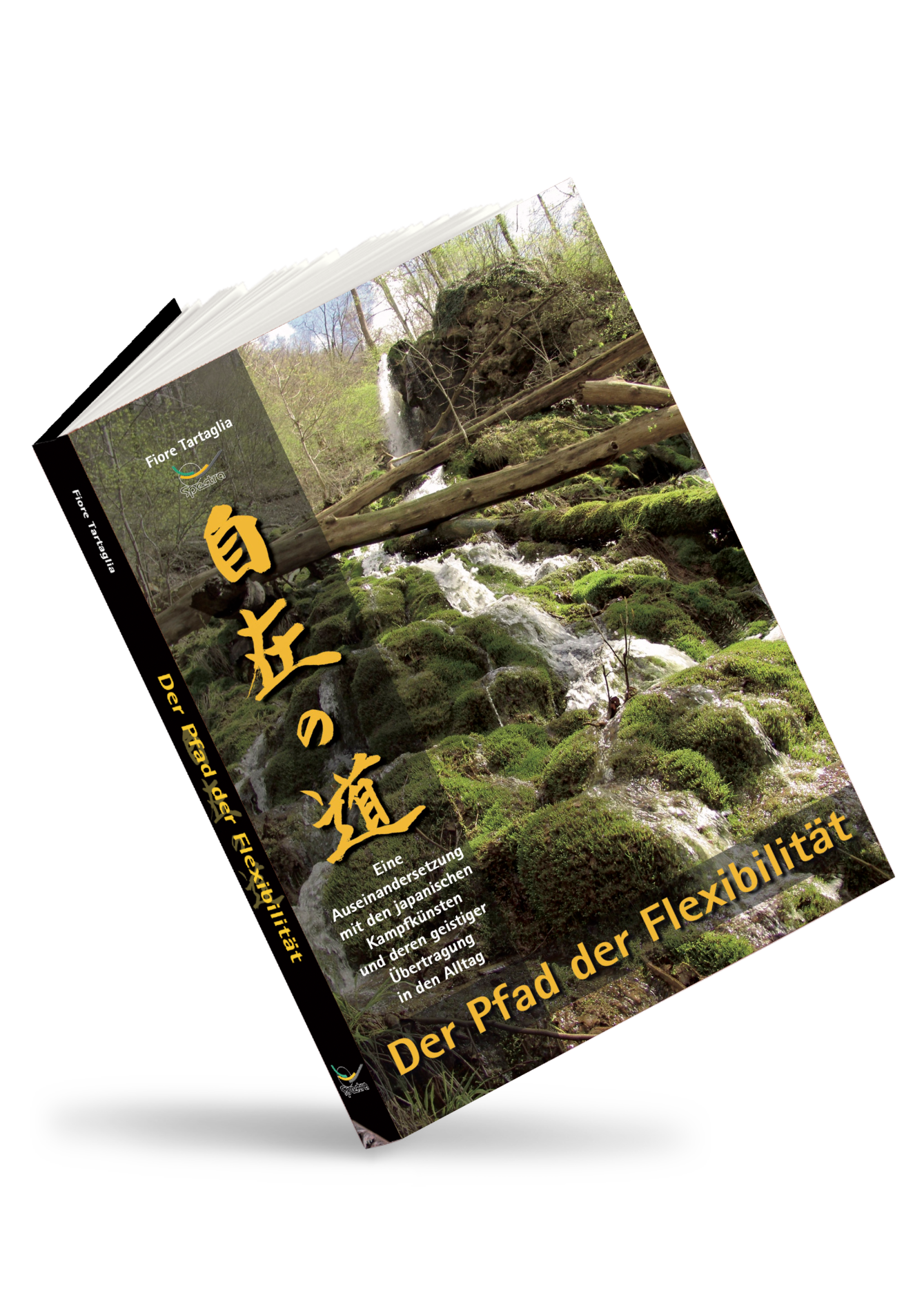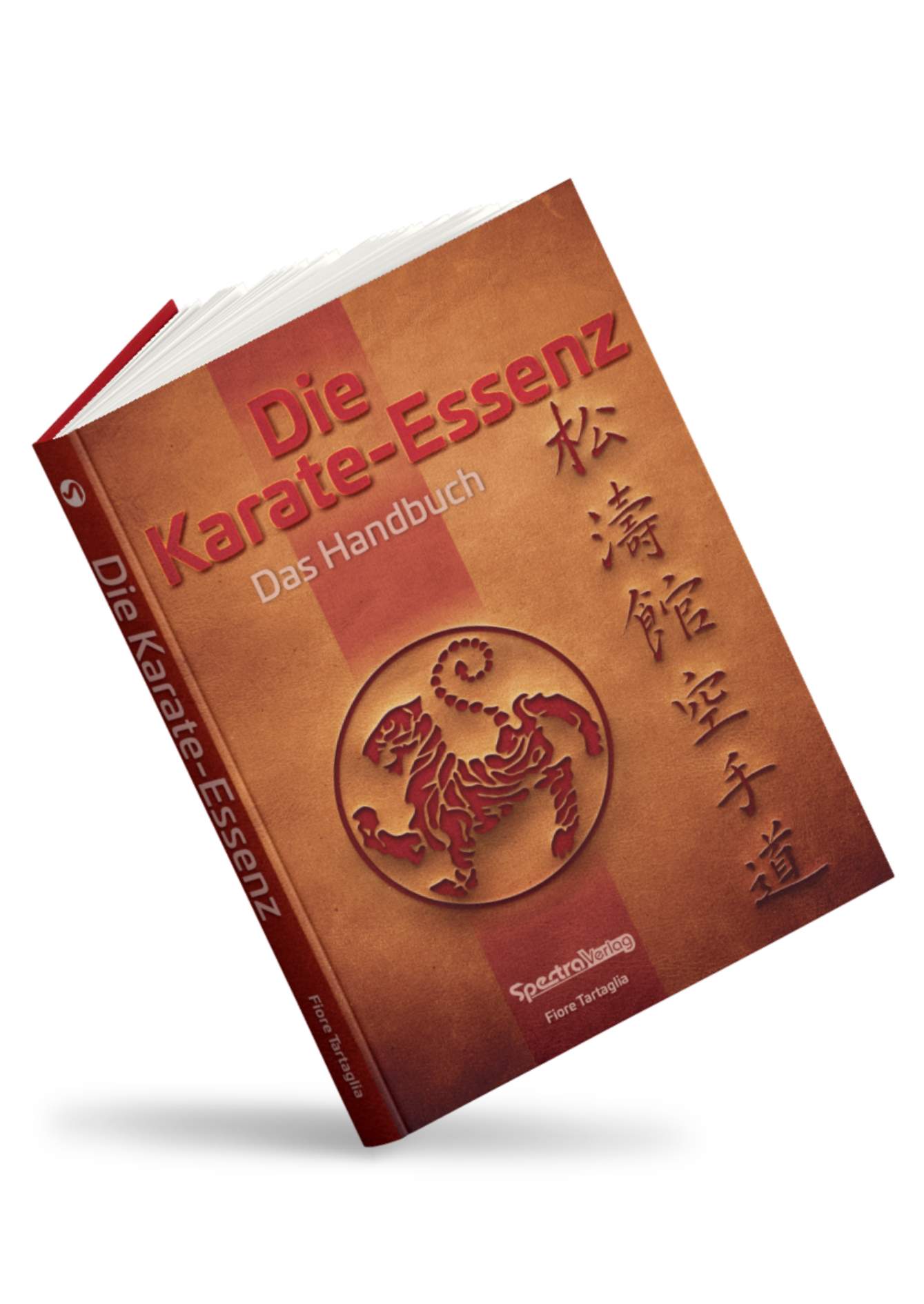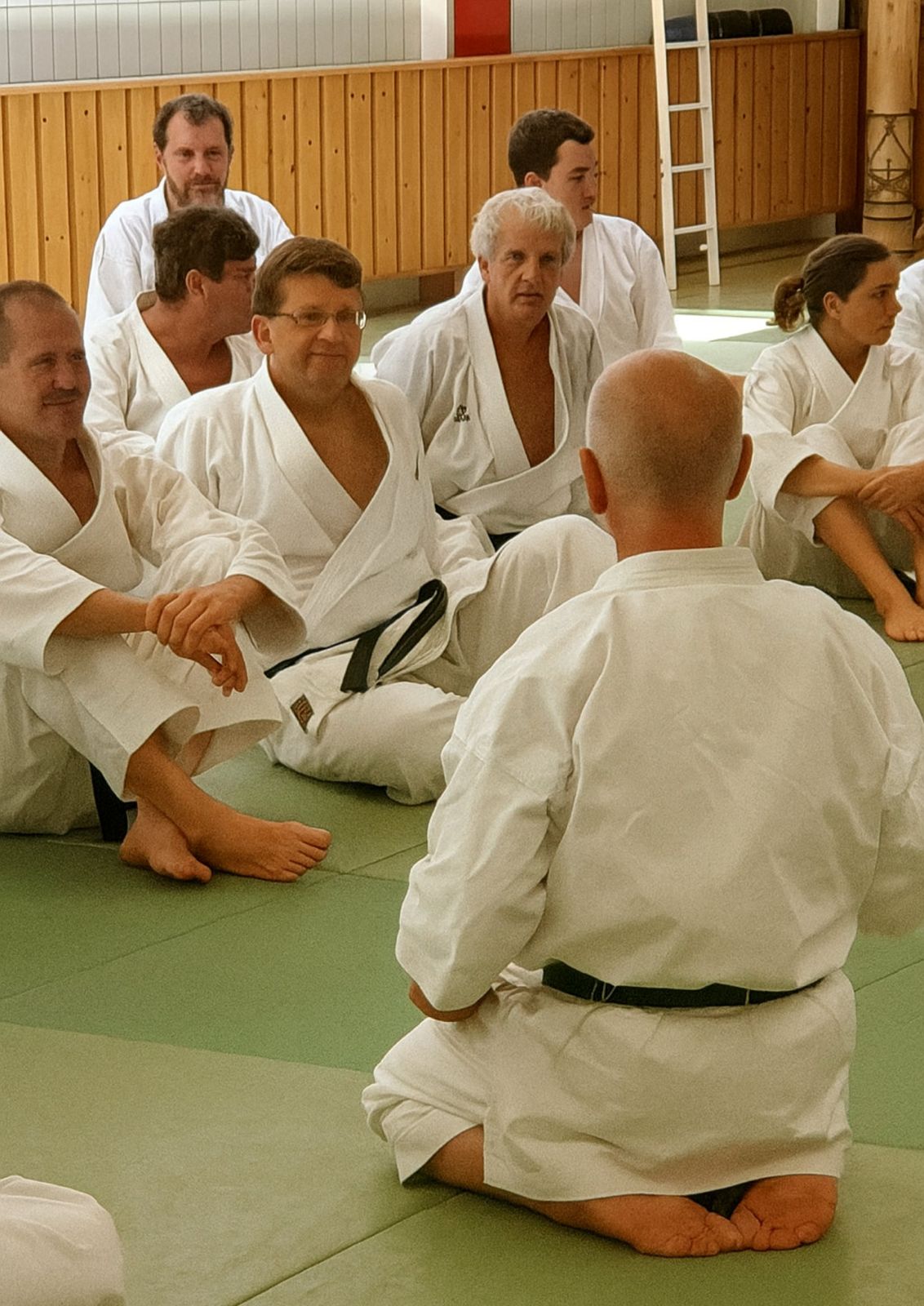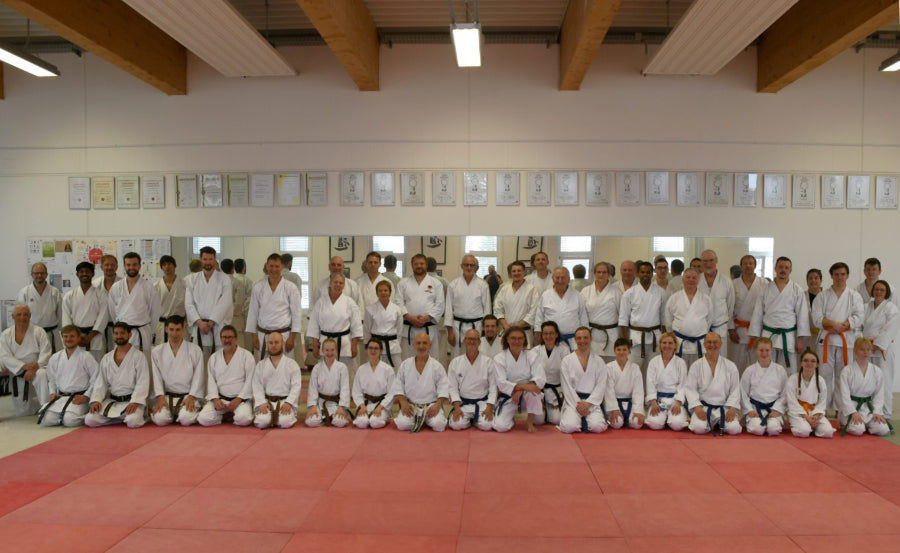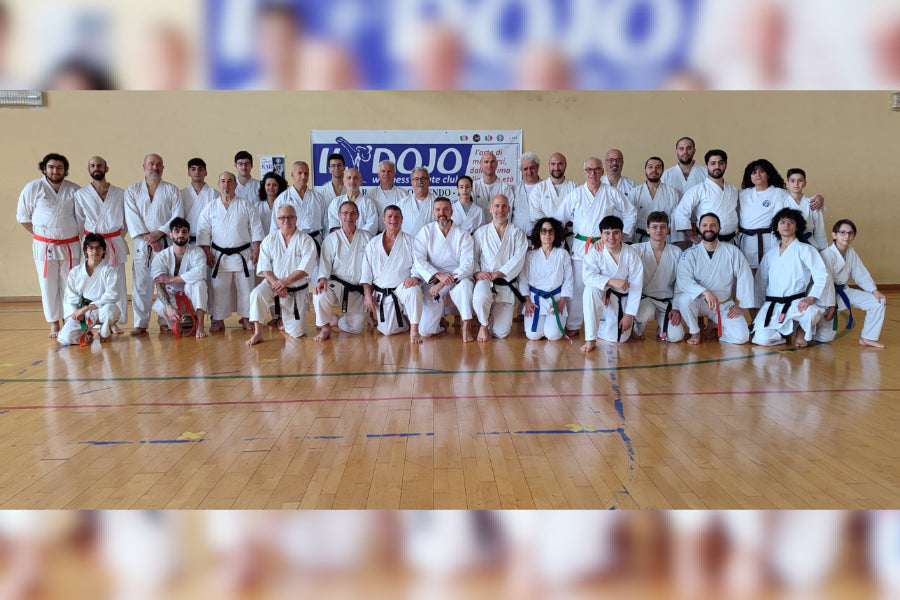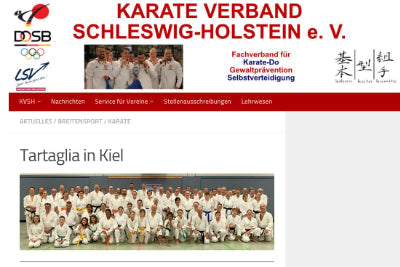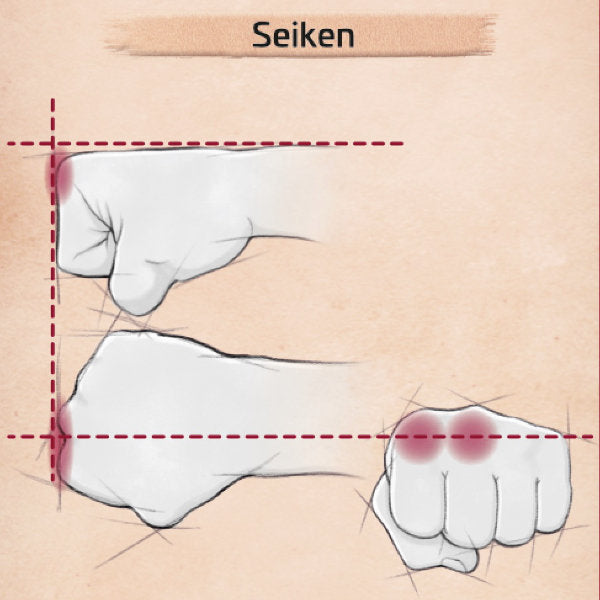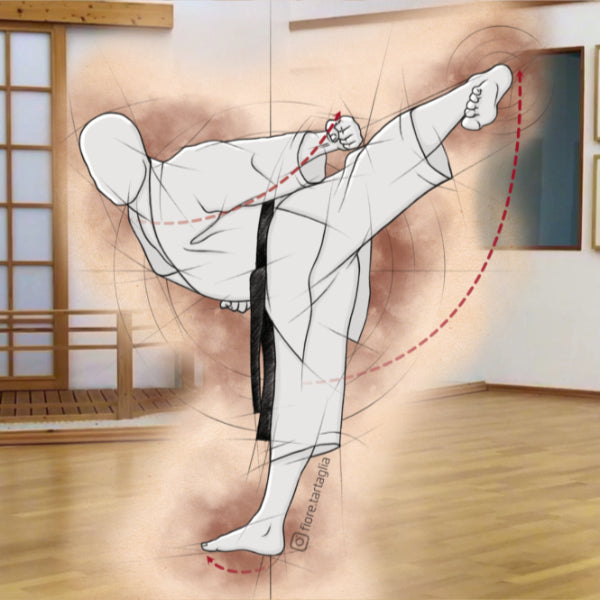
Message of the illustration "Karate in everyday life":
Washing your face in the morning helps you maintain an upright posture and keep your back straight. This relieves pressure on your lumbar spine and strengthens your muscles.
Easily integrate karate training into your everyday life
Regular karate training can lead to positive physical and mental results. The type of instruction and the intensity of the training are crucial. The more often a topic is covered correctly and thoroughly, the faster the results will be visible. The practical thing about this is that the training sessions can be easily integrated into your daily routine without neglecting other activities and commitments.
As a rule, we always have more time at our disposal than we think and in this article I would like to go into this in more detail.
Save time by considering two aspects
To practice specific elements of karate outside of the dojo, we don't need to invest more time. It's possible to train while engaging in other activities that don't require full concentration. Two important aspects should be considered:
First, we can integrate training into everyday habits. For example, while brushing our teeth, we can perform isometric exercises or improve our posture in Zenkutsu dachi (extending our legs and controlling our balance). Breathing exercises can be performed while walking or during ordinary routine activities like setting the table. Even getting up from a sitting position or getting out of bed can be considered a karate exercise.
Second , it's important to consciously limit the time spent exercising so that they're not perceived as an additional chore or burden, which leads to neglect or even abandonment. It's important that the training is manageable in everyday life and that the realistic duration ensures consistency.
Only in this way can we effectively integrate karate training into our daily routine without spending additional time.
The training location outside the dojo
Karate training can take place in various locations outside the dojo, be it in the basement, living room, hallway, bathroom, garden, waiting room, car, during a walk or while shopping – practically anywhere.
In places where the environment permits, the complete techniques can be performed without restrictions. Elsewhere, discreet elements such as breathing, muscle tension and relaxation, presence, and centering can be practiced.
The purpose of this variety of training is to create new neural connections in the brain. Once these patterns are automated, we can recall them reflexively.
Continuity shapes the master
This unconventional form of everyday training complements regular training in the dojo and leads to the desired results. The key is consistency.
One training session per week usually results in the existing level being maintained.
The first improvements can be seen after just two training sessions per week .
Daily training , which focuses on a specific aspect of the discipline, allows for a special, even occasional but above all sustainable development.
The key is the will to integrate the training into your daily life until it becomes a permanent habit. Daily engagement with karate, and thus with yourself, will then occur automatically. An integrated habit or routine is one in which practice becomes seamlessly integrated into your daily routine. The training effect is then continuously visible and noticeable, and karate itself becomes more present in all actions. The goal is to positively change your own actions and thinking in various everyday situations.
Talent and routine
Talent is always a good, and above all, very helpful, foundation on the path to success. Consistent training, on the other hand, always leads to excellent and lasting results. Training requires motivation and discipline; these are qualities that often become second nature to experienced karateka over time. Incorporating additional training into your daily routine requires motivation. The constant repetition of movements and techniques requires discipline. Loosening up, coordination, and strengthening, as well as memorizing kata (defensive and offensive sequences, combinations, and combat exercises), also requires discipline.
A realization
The realization here is that a karateka never reaches his goal. The true goal is achieved when the desire for further development and the thirst for knowledge persist even after initial successes.
Over time, the karateka's attitude toward consistency imperceptibly changes. Constant repetition becomes automatic, and even small movements eventually show progress, even if it isn't always immediately noticeable after long practice. Thanks to this development, the techniques learned in basic training can now be deepened.
Transfer to everyday life and improvement of quality of life
This approach automatically transfers to everyday life: Over time, tasks and responsibilities are no longer viewed as burdens or obstacles, but rather as challenges to be mastered. With this newfound mental attitude, they are now approached systematically and mastered with greater composure.
A form of quality of life, because the disciplined handling of demanding tasks that one learns over time contributes to a more relaxed state of mind. Furthermore, one's own performance increases without having to exert oneself particularly hard. When the progress achieved is finally recognized externally, for example, by colleagues, friends, or family, this often increases motivation.
How attention is focused
The ability to focus on seemingly small or unimportant things opens up new horizons and can lead to great results.
It's the details that make the difference.
The holistic physical and mental practice of karate in and outside the dojo promotes this ability to concentrate.
Training in the dojo ensures that complex movements can be mastered and properly coordinated. Once this solid technical foundation has been established, the fine-tuning follows, which is crucial for development to the master level. For example, this could be an incompletely rotated hip or an inharmonious rhythm, which slows down the entire sequence. These details can be corrected by concentrating on the individual parts of the movement. Only then can you discover which mechanisms need to be synchronized to achieve a more harmonious overall picture. In this way, the mental ability to focus full attention on individual details and to block out unimportant aspects, at least temporarily, is developed.
The learned ability to concentrate
The concentration skills learned in karate training are also useful outside of the sport. It can serve as a tool to identify, question, and, if necessary, change unconscious habits. The approach is the same: By concentrating on a specific detail within a larger task, it becomes easier to tackle the entire task. By focusing on this detail, the overall effort is reduced. Step by step, further details can then be mastered until the entire task is finally accomplished.
CONCLUSION
The essence and the great secret in karate training and beyond is to develop a passion for the cause. This dedication drives us to go beyond the norm and inevitably leads to extraordinary results. Those who act normally achieve normal results. Only those who are extremely committed achieve outstanding results.


